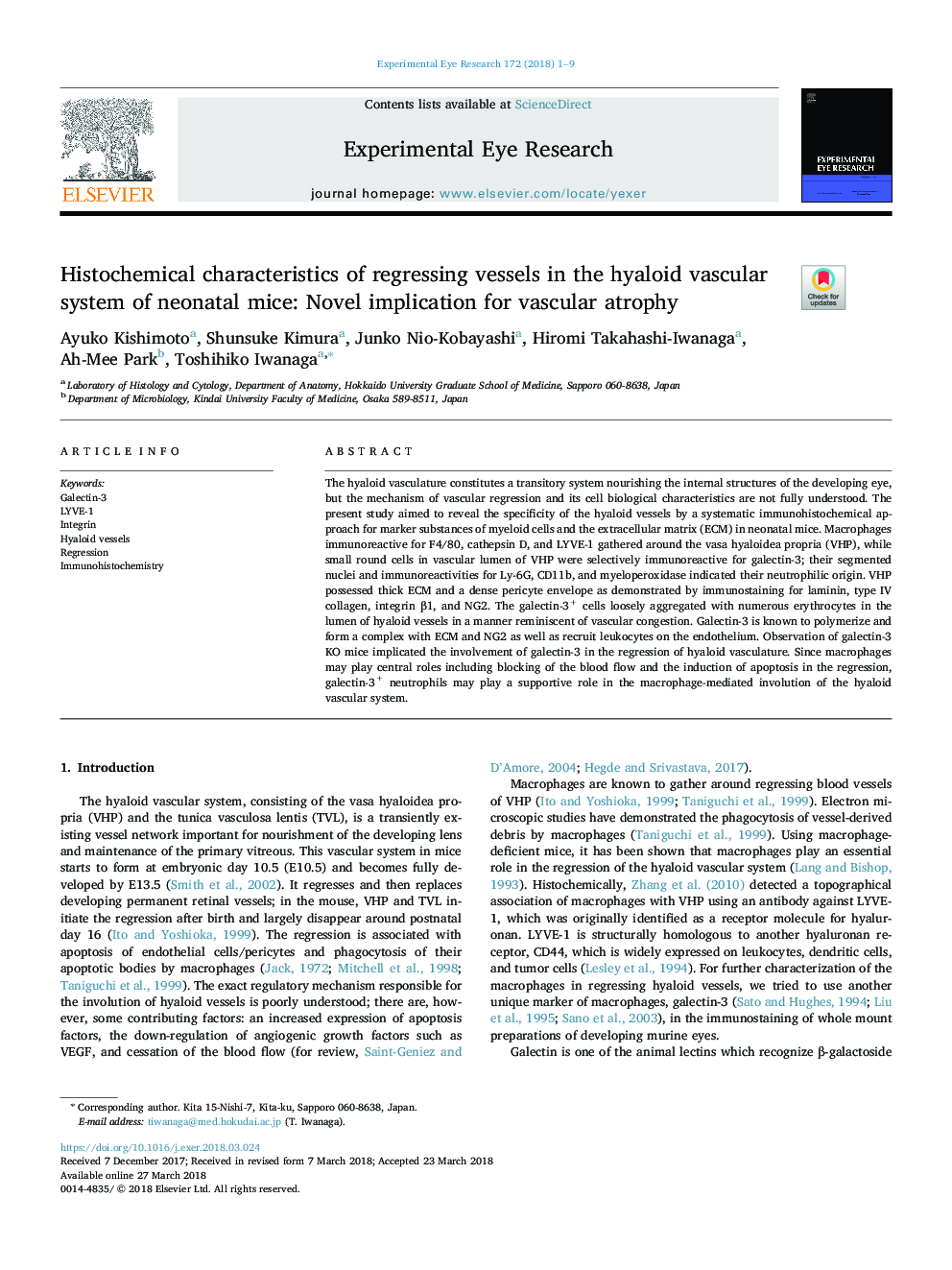| Article ID | Journal | Published Year | Pages | File Type |
|---|---|---|---|---|
| 8791957 | Experimental Eye Research | 2018 | 9 Pages |
Abstract
The hyaloid vasculature constitutes a transitory system nourishing the internal structures of the developing eye, but the mechanism of vascular regression and its cell biological characteristics are not fully understood. The present study aimed to reveal the specificity of the hyaloid vessels by a systematic immunohistochemical approach for marker substances of myeloid cells and the extracellular matrix (ECM) in neonatal mice. Macrophages immunoreactive for F4/80, cathepsin D, and LYVE-1 gathered around the vasa hyaloidea propria (VHP), while small round cells in vascular lumen of VHP were selectively immunoreactive for galectin-3; their segmented nuclei and immunoreactivities for Ly-6G, CD11b, and myeloperoxidase indicated their neutrophilic origin. VHP possessed thick ECM and a dense pericyte envelope as demonstrated by immunostaining for laminin, type IV collagen, integrin β1, and NG2. The galectin-3+ cells loosely aggregated with numerous erythrocytes in the lumen of hyaloid vessels in a manner reminiscent of vascular congestion. Galectin-3 is known to polymerize and form a complex with ECM and NG2 as well as recruit leukocytes on the endothelium. Observation of galectin-3 KO mice implicated the involvement of galectin-3 in the regression of hyaloid vasculature. Since macrophages may play central roles including blocking of the blood flow and the induction of apoptosis in the regression, galectin-3+ neutrophils may play a supportive role in the macrophage-mediated involution of the hyaloid vascular system.
Related Topics
Life Sciences
Immunology and Microbiology
Immunology and Microbiology (General)
Authors
Ayuko Kishimoto, Shunsuke Kimura, Junko Nio-Kobayashi, Hiromi Takahashi-Iwanaga, Ah-Mee Park, Toshihiko Iwanaga,
